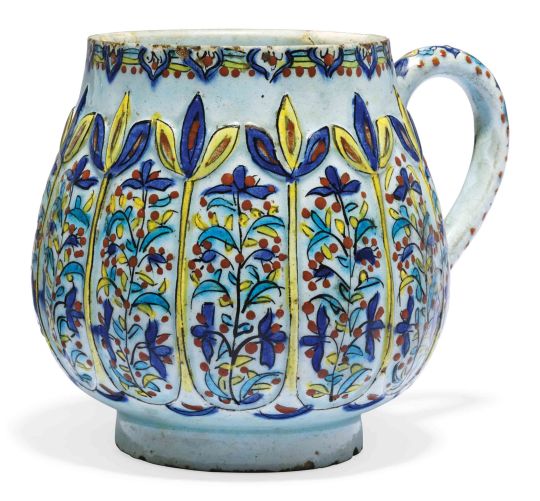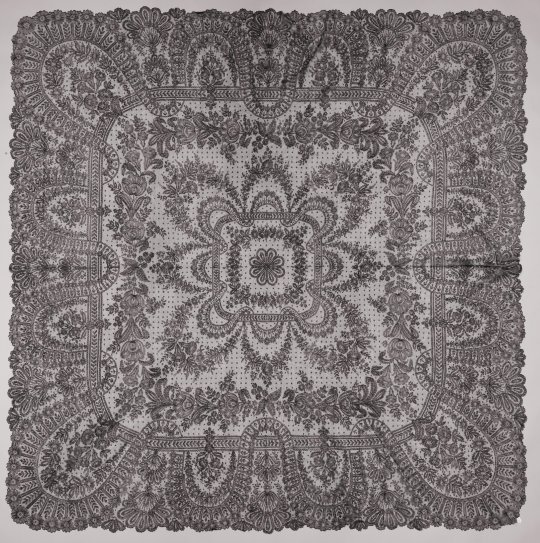Don't wanna be here? Send us removal request.
Text

Vase; door hinge -2500 / -2400 (Early Dynastic IIIB) Place of creation: Eastern Iran Place of discovery: Mari temple of Ishtar, priests' chamber
Louvre Museum
1 note
·
View note
Text


Mohammed Soltan, attributed- Binding cover: hunting scene (detail) 1560/1588 (16th century) Louvre Museum
1 note
·
View note
Text

Tile with a bouquet of tulips in a leafy palmette on a green background, 1600/1800 (17th century; 18th century). Place of origin: Turkey (?); Maghreb (?); Syria (?) Louvre Museum
7 notes
·
View notes
Text

Scroll tile with carnations and tulips on a black background, 1600/1700 (17th century [?]). Place of origin: Syria Louvre Museum
0 notes
Text

Tile with a large leafy palmette enclosing a tuft of flowers in a turquoise center, 1540 / 1700 (2nd quarter of the 16th century; 2nd half of the 16th century; 17th century). Place of origin: Syria.
Louvre Museum
1 note
·
View note
Text

Tile with a field of carnations, irises, and hyacinths and a bird on a blue background, 1575 / 1700 (4th quarter of the 16th century; 17th century), Place of origin: Syria. Louvre Museum
0 notes
Text

An Amorous Embrace. Delhi School, circa 1790-1810. Gouache heightened with gold on paper. Christie´s Auction
0 notes
Text

A Kutahya Moulded Turquoise Pottery Jug. Ottoman Turkey, 18th century. Christie's Auction
0 notes
Text

Early Islamic Silk Lampas Panel. Iran, Second half 7th or 8th century. Christie's Auction
0 notes
Text

Sasanian or Sogdian Silk Lampas Panel. Iran or Central Asia, circa 8th. century. Woven in red, blue, green and gold silk with two large roundels with pearl borders containing large winged horses with slightly raised forelegs, each with outspread wings with quatrefoil and heart-shaped designs, gold studded blue sash around neck and long striped mane, tail plaited with gold beads, all on gold ground, rosettes inside gold roundels above and below main roundels, with large flowering plants between large roundels on red ground, very vibrant and strong colours. 18¾ x 34¾in. (47.6 x 88.3cm.) Christie's
4 notes
·
View notes
Text

Bottle. Turkey, 18th-19th century. Stone-paste painted under glaze. Smithsonian
0 notes
Text

Ornament with a pair of lions. Turkey, 13th. century. Bronze, traces of gilding. Smithsonian
0 notes
Text

Tiles. Turkey, circa 1525. Smithsonian
0 notes
Text

Temperantia, back figure of a nude woman with a jug, c. 1600 - c. 1625. Ivory. Anonymous, Southern Germany, after print by Hendrick Goltzius (possibly). Rijksmuseum
0 notes
Text

Gerard van Opstal - Bacchanal of Satyrs and Putti, c. 1635 - c. 1642. Ivory. Rijksmuseum
0 notes
Text


Shawl of black bobbin lace: Chantilly lace. On a lattice ground in the middle a rosette, around it a square entwined with bands of flowers and leaves and a rectangle with the same ornament on a larger scale. Between the square and the rectangle garlands and large linked floral motifs. Scalloped edge with palmettes, circa c. 1860 - c. 1874 .
Lacemaker: anonymous, Bayeux (possibly) Lacemaker: anonymous, Geraardsbergen (possibly)
4 notes
·
View notes
Text

Strip of natural-coloured bobbin lace: old Flemish bobbin lace. The repeating and largely symmetrical pattern consists of a double volute, which is mirrored over the width axis and below that a semi-circular shell, which is formed by a spiral. The motifs are formed by bobbin lace ribbons, made in linen stitch with openwork edges. The spiral is surrounded by a regularly winding narrower ribbon. Between the mirrored volutes crosses are made with shaped strokes. The motifs are connected to each other by braids. The upper edge is finished with a separate bobbin lace band. Lacemaker: anonymous, Tonderen (possibly), c. 1625 - c. 1649. .
1 note
·
View note